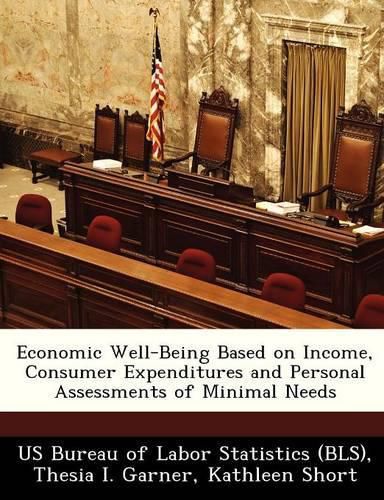Readings Newsletter
Become a Readings Member to make your shopping experience even easier.
Sign in or sign up for free!
You’re not far away from qualifying for FREE standard shipping within Australia
You’ve qualified for FREE standard shipping within Australia
The cart is loading…






Responses to minimum income and minimum spending questions are used to produce economic well-being thresholds. Thresholds are estimated using a regression framework. Regression coefficients are based on U.S. Survey of Income and Program Participation (SIPP) data and then applied to U.S. Consumer Expenditure Survey (CE) data. Three different resource measures are compared to the estimated thresholds. The first resource measure is total before-tax money income, and the other two are expenditure based. The first of these two refers to expenditure outlays and the second to outlays adjusted for the value of the service flow of owner-occupied housing (rental equivalence). The income comparison is based on SIPP data while the outlays comparisons are based on CE data. Results using official poverty thresholds are shown for comparison. This is among the earliest work in the U.S. in which expenditure outlays have been used for economic well-being determinations in combination with personal assessments, and the first time rental equivalence has been used in such an exercise. Comparisons of expenditures for various bundles of commodities are compared to the CE derived thresholds to provide insight concerning what might be considered minimum or basic. Results reveal that CE and SIPP MIQ thresholds are higher than MSQ thresholds, and resulting poverty rates are also higher with the MIQ. CE-based MSQ thresholds are not statistically different from average expenditure outlays for food, apparel, and shelter and utilities for primary residences. When reported rental equivalences for primary residences that are owner occupied are substituted for out-of-pocket shelter expenditures, single elderly are less likely to be as badly off as they would be with a strict outlays approach in defining resources.
$9.00 standard shipping within Australia
FREE standard shipping within Australia for orders over $100.00
Express & International shipping calculated at checkout
Responses to minimum income and minimum spending questions are used to produce economic well-being thresholds. Thresholds are estimated using a regression framework. Regression coefficients are based on U.S. Survey of Income and Program Participation (SIPP) data and then applied to U.S. Consumer Expenditure Survey (CE) data. Three different resource measures are compared to the estimated thresholds. The first resource measure is total before-tax money income, and the other two are expenditure based. The first of these two refers to expenditure outlays and the second to outlays adjusted for the value of the service flow of owner-occupied housing (rental equivalence). The income comparison is based on SIPP data while the outlays comparisons are based on CE data. Results using official poverty thresholds are shown for comparison. This is among the earliest work in the U.S. in which expenditure outlays have been used for economic well-being determinations in combination with personal assessments, and the first time rental equivalence has been used in such an exercise. Comparisons of expenditures for various bundles of commodities are compared to the CE derived thresholds to provide insight concerning what might be considered minimum or basic. Results reveal that CE and SIPP MIQ thresholds are higher than MSQ thresholds, and resulting poverty rates are also higher with the MIQ. CE-based MSQ thresholds are not statistically different from average expenditure outlays for food, apparel, and shelter and utilities for primary residences. When reported rental equivalences for primary residences that are owner occupied are substituted for out-of-pocket shelter expenditures, single elderly are less likely to be as badly off as they would be with a strict outlays approach in defining resources.